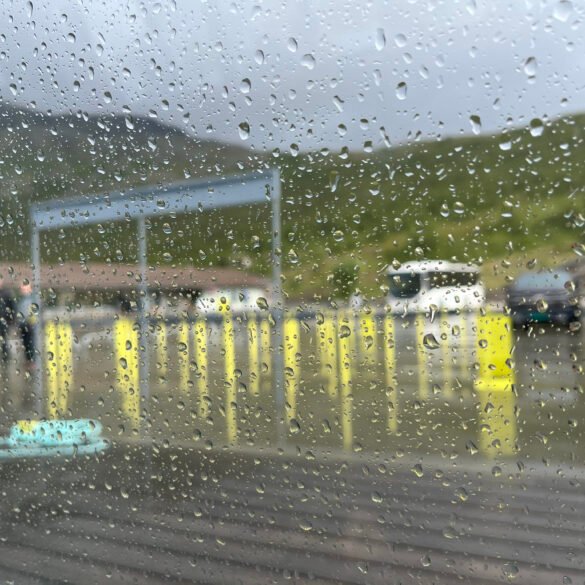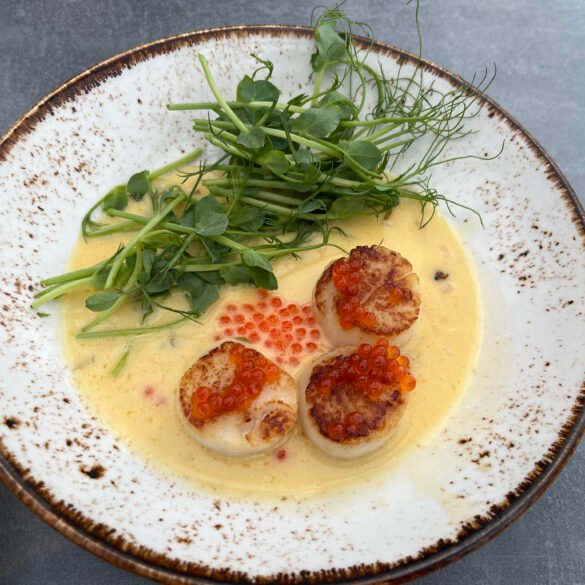Remember last year we went to Türkiye and came back to write the entire post about leblebi - a Turkish snack that impressed us so much. On our trip to Norway this summer, something similar happened. And we are here to tell you about the most iconic Norwegian food item and a new word in our vocabulary—brunost!
Brunost (translated from Norwegian as “brown cheese”) is a big deal in Norway. We learned this on our first day in the country when we joined a walking tour in Bergen. After making introductory remarks about Norway's history and sprinkling a few jokes about neighboring Sweden, a tour guide casually pulled a block of brown cheese from his backpack and started slicing it with a special knife for people on the tour. He was very proud of this Norwegian delicacy and wanted to make sure everyone tried it before leaving the country. We loved brunost at our first bite, and after the tour, we headed to a grocery store to buy more of it.
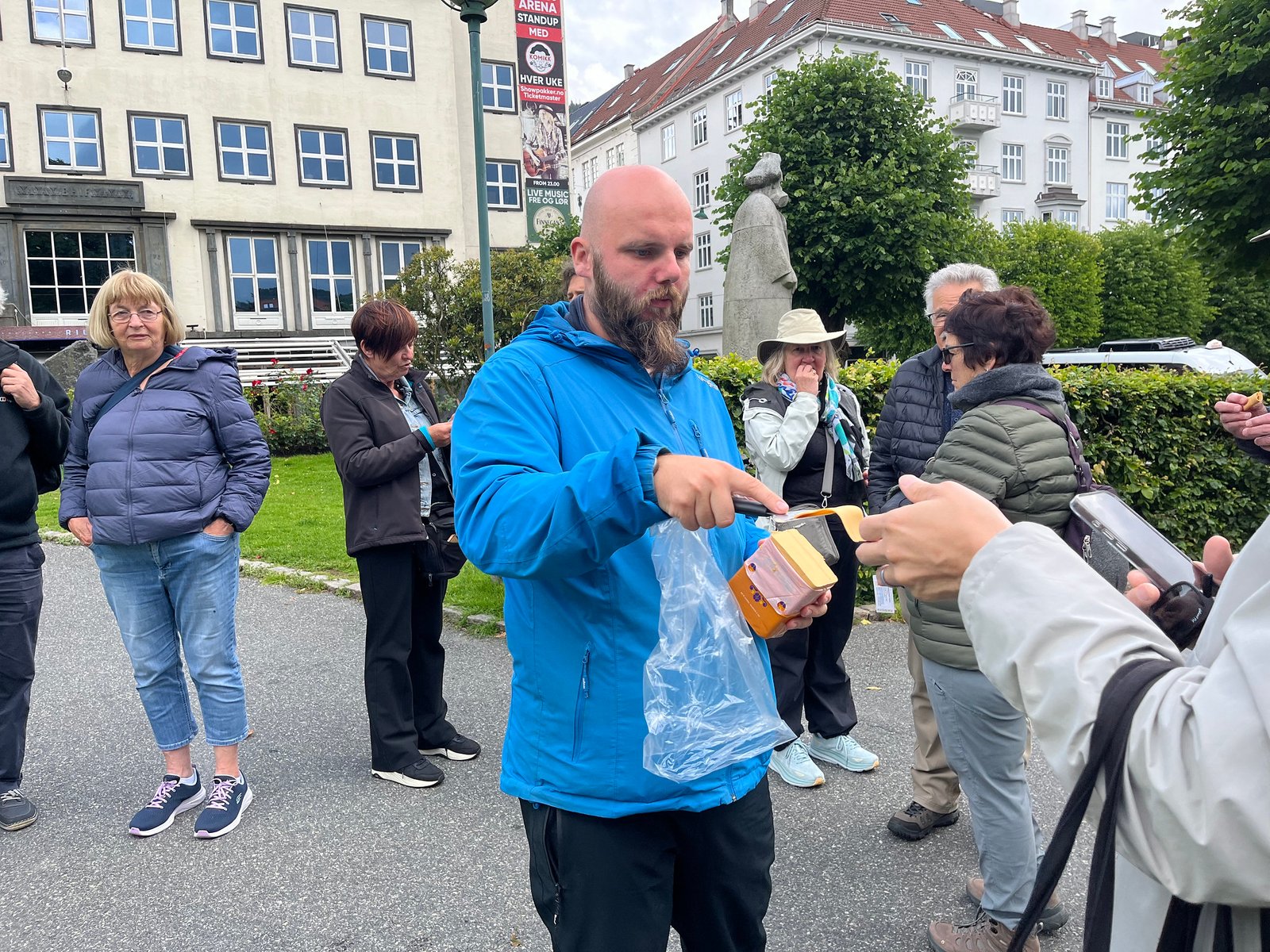
It's called brown cheese for its color. For the pedantic people reading this blog, yes, you are correct: brunost is not technically cheese. Its key ingredient is whey, a byproduct of cheese making and something that is left after cheese is removed from milk. But who cares about technicalities? By boiling down whey and cream, the Norwegians unlocked this gooey, caramel-colored substance that is so tasty and rich.
We ate brunost almost every day and couldn't get enough of its sweet, caramel taste. Our favorite way was by putting a slice or two on top of flatbrød, a type of Norwegian crispy bread, or by simply eating slice after slice. There are different types of brown cheese (cow cheese, cow cheese mixed with goat cheese, and goat cheese), and we tried them all. In the idyllic town of Undredal, known for its goat cheese, we even went for a tasting at a local restaurant and tried various types of goat cheese, including a 100% goat’s milk brunost that had a very pungent taste. Brunost is traditionally served on bread, crackers, or waffles, sometimes accompanied by butter, sour cream, or jam, and we made sure to try it every way possible.
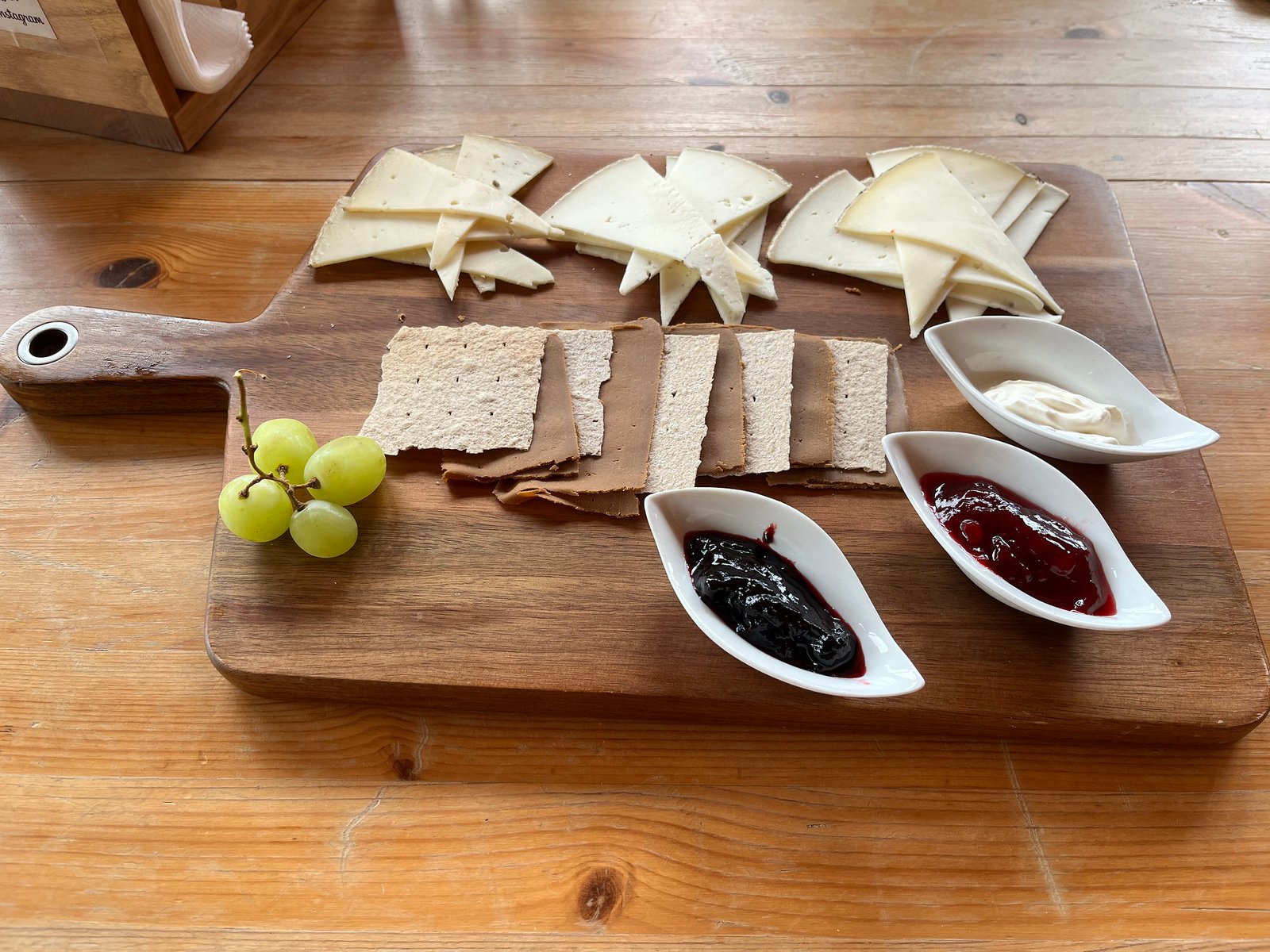
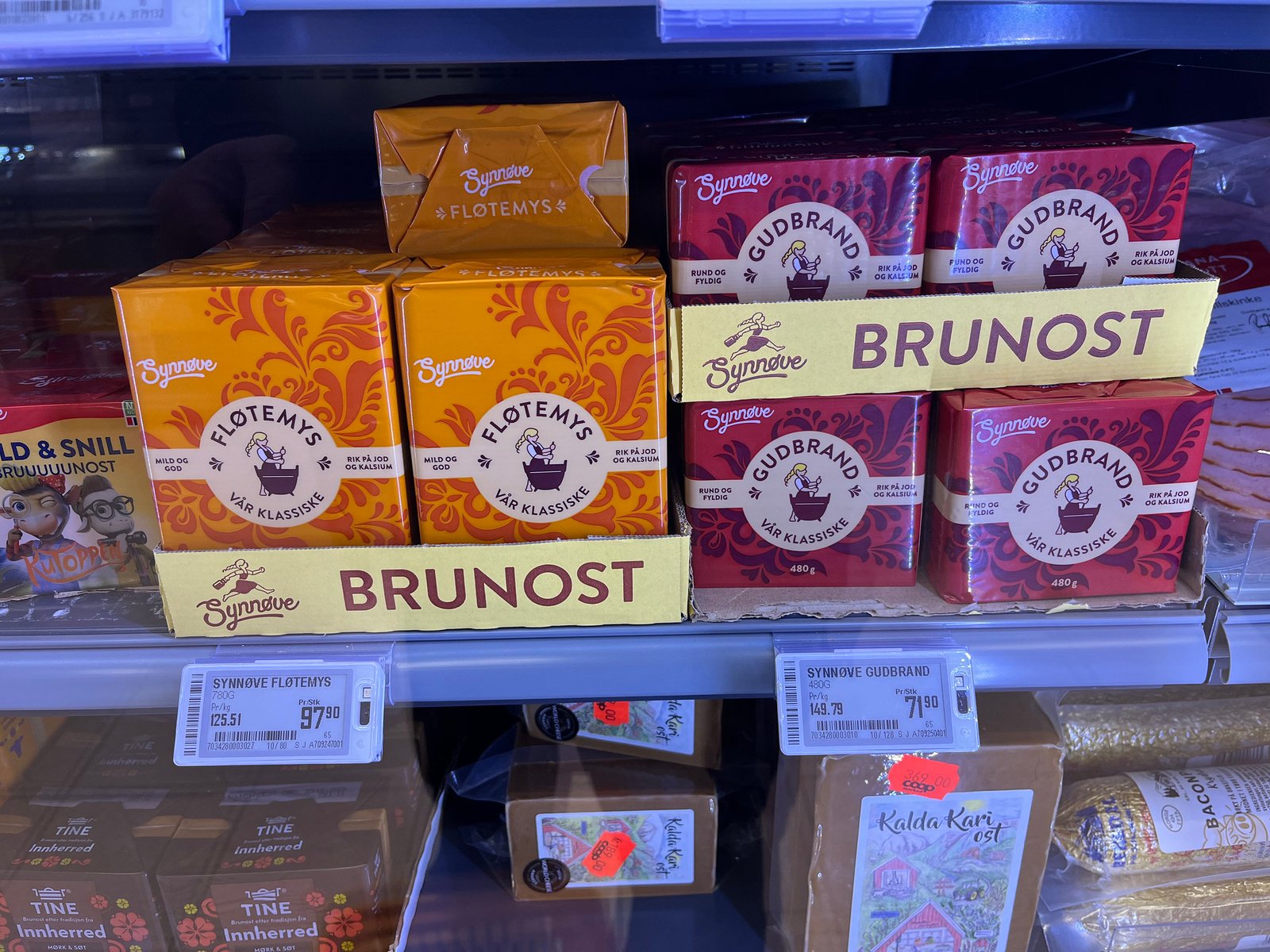
Initially, we were buying small packages of brunost in grocery stores containing several sliced pieces per package. But after spending about a week in the country, we started to do what Norwegians do—we purchased a special knife (a Norwegian invention) and carried a block of brunost with us, just like our tour guide in Bergen.
Having a proper knife is essential as you must slice it very thinly. If you use a regular knife, the pieces would be too thick, and some people compared chewing thick slices to trying to chew clay. It's a form of art to cut a proper slice, and Norwegians are not only born with the skis on their feet but also apparently with the brunost-slicing skills in their hands. I'm also pretty sure that cutting brunost with a regular knife is a deportable offense in Norway. By the end of the trip, Julia became an expert in handling a cheese knife. As a wizard, she would masterfully whip out a cheese block from a backpack and start slicing it left and right. Be it at the top of the mountain or the airport lounge, the tasty cheese was always near and ready to be devoured.
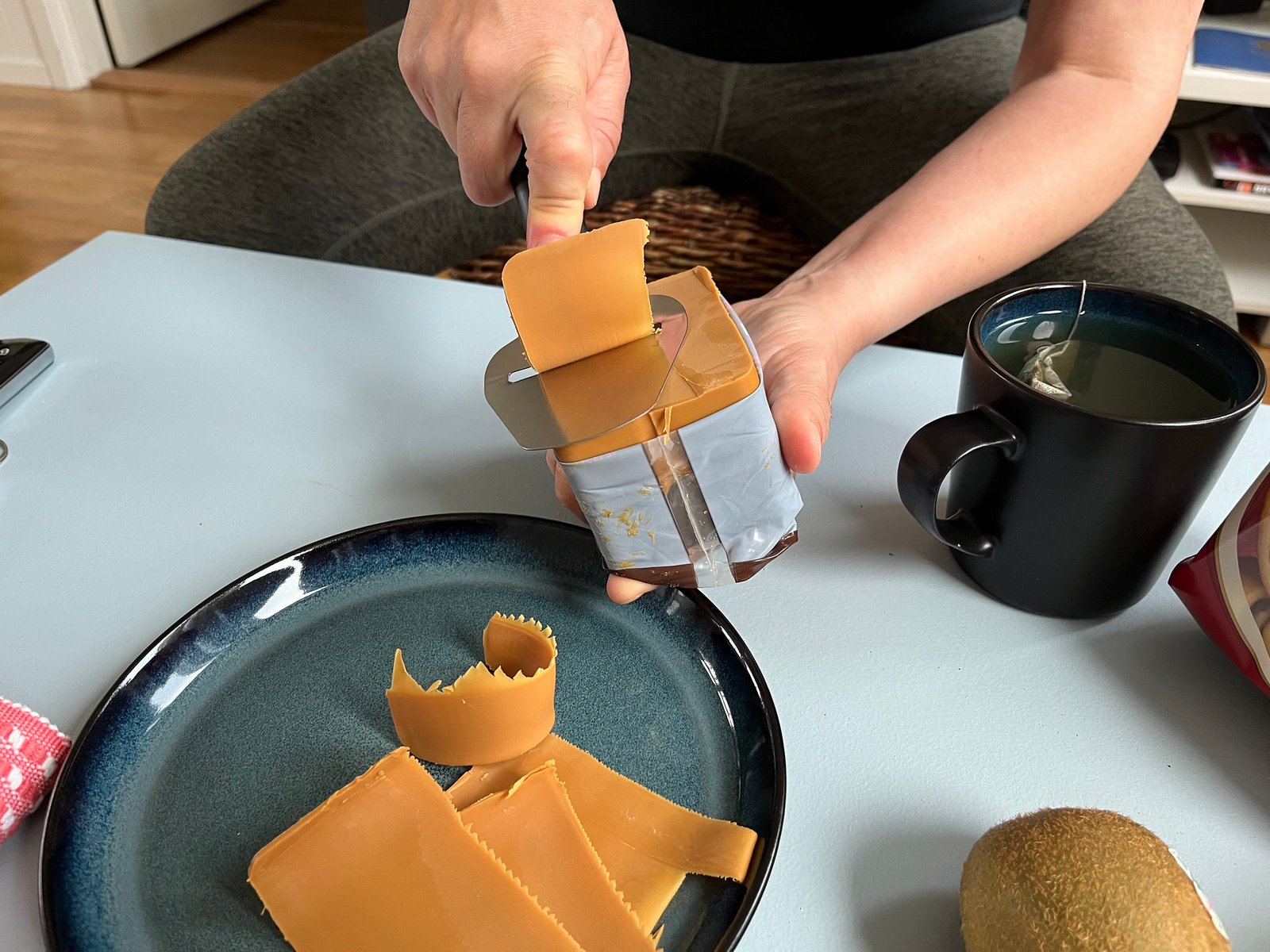
We loved brunost so much and were eager to eat it every day to the point that we had to force ourselves to take breaks from it to try other delicious Norwegian cheeses. Before visiting Norway, we were not even aware of the existence of brunost. And now, we couldn't even fathom going a day without it. Sitting on the bank of a fjord or hiking a trail and munching on this sweet brown delicacy, we over and over again wondered why the rest of the world hadn't found out yet about it.
On the last day in Bergen—as we were getting ready to say goodbye to the beautiful country of fjords and Vikings—we had one task to do. Right before leaving for the airport, we stopped at a grocery store and bought four blocks of brunost to take home. And I must tell you that once those four blocks are finished (and we are getting there soon), we will be on the hunt for more in artisanal cheese shops in the Chicagoland area and the U.S. We just hope that whatever we find in the States measures up and has that rich, caramel taste that will forever be associated with Norway.
